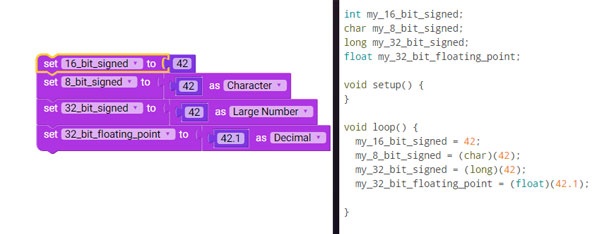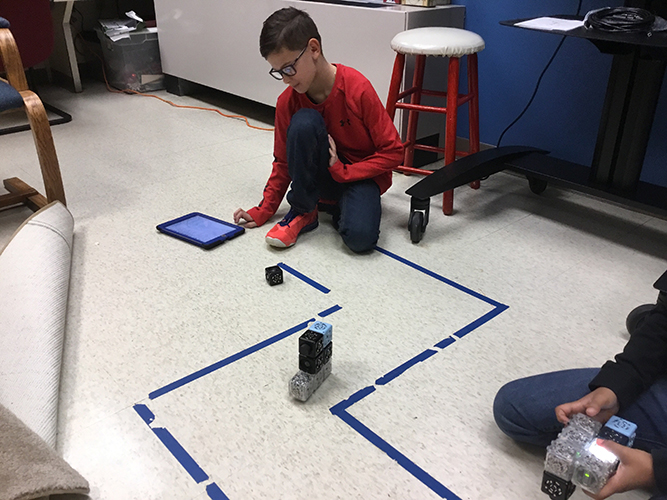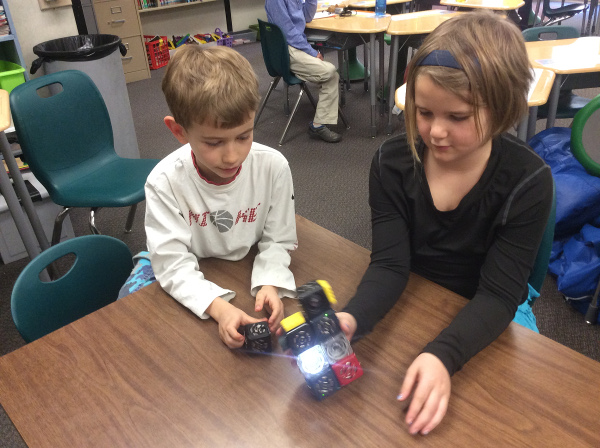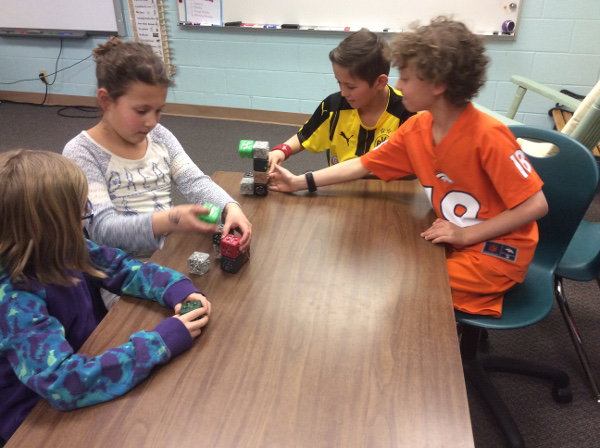Now, it’s easier than ever to take STEM education to the next level. Students love Cubelets — and it doesn’t take much to start teaching with tiny robots. But for many students, as they reach more advanced lessons, they need a bigger challenge.
The new Wonder Ed Expansion pack comes with a mix of Cubelets® robot blocks not commonly found in our smaller kits that will allow you to enhance your Cubelets lessons and provide your students with a more advanced hands-on experience.
This expansion pack is the perfect way to explore computational thinking and uncover a deeper understanding of how Cubelets operate. The Cubelets included in this pack are key to understanding concepts such as variables, logic, and conditionals that are essential to coding and using the
Cubelets Blockly Application.

One of the lesson plans you can complete with the addition of this expansion pack is the Data Flow lesson plan, designed for grades
4-6 and
7-12. This lesson introduces students to the Threshold, Maximum, and Minimum Cubelets. It also teaches them about coding, value, and data transfer as they relate to robotics.
Lessons such as
Sensing and Magnitude,
Building Different Robots, and
Cause and Effect utilize the Knob Cubelet. The Bar Graph can be found in lessons related to the engineering design process:
Engineering Problem-Solving,
Criteria and Constraints, and
Amusement Park Ride among them. The Blocker can be used in larger, more complex robot constructions to allow you to control two separate senses at one time. Plus, the Temperature block is an extra SENSE Cubelet your students can work into their robot creations, creating a construction that reacts to changes in temperature.
Check out the
Getting Started Guide and our
free lesson plans for a better understanding of how this expansion pack can augment your curriculum.
 It took some time, however to realize his makerspace vision.
Continue reading
It took some time, however to realize his makerspace vision.
Continue reading  It took some time, however to realize his makerspace vision.
Continue reading
It took some time, however to realize his makerspace vision.
Continue reading  It took some time, however to realize his makerspace vision.
Continue reading
It took some time, however to realize his makerspace vision.
Continue reading 





 One of the lesson plans you can complete with the addition of this expansion pack is the Data Flow lesson plan, designed for grades
One of the lesson plans you can complete with the addition of this expansion pack is the Data Flow lesson plan, designed for grades 